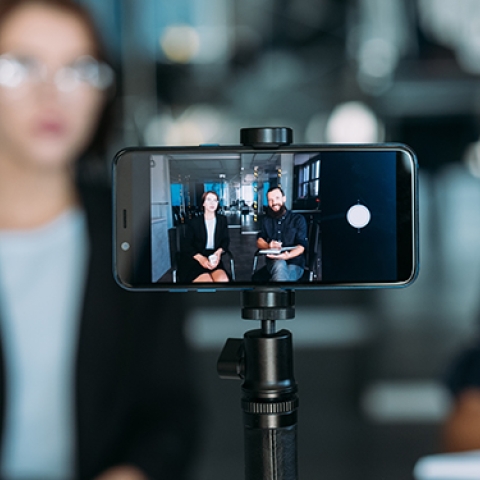What Not to Do with Video Marketing

The motion picture was created in 1892, and arguably perfected by the time of Charlie Chaplin. Yet, event companies still trip over themselves trying to produce and distribute video.
Monique Elwell, president and COO of Storyvine, a guided video technology platform whose clients include IBM, has seen her fair share of cringe-worthy mistakes. Often, she says, these miscues stem from overthinking the process.
Anyone involved in marketing knows video is the gold standard of content (sorry, writers!). That knowledge is a blessing and a curse. Expenses and circumstances mean professional, high-quality video is hard to come by. As a result, it is often treated like a rare gem — distributed only sparingly even though it’s understood to be a very effective medium.
 That mindset is just one of the many obstacles event organizers need to overcome to prove their trade show, meeting or convention is worth the money and travel time to attend face-to-face. We talked to Elwell about why it is so difficult to get video right and what not to do going forward.
That mindset is just one of the many obstacles event organizers need to overcome to prove their trade show, meeting or convention is worth the money and travel time to attend face-to-face. We talked to Elwell about why it is so difficult to get video right and what not to do going forward.
Don’t Treat Video Like a Precious Commodity
While professional videography and photography aren’t cheap, they’re worth the expense. But having such high-quality final products can be oddly paralyzing. “When you do traditional, provisional professional video, it's really expensive. And therefore, it's very precious,” Elwell explained. “So, you only put it on your website or use it once per year.”
Think about the process like grocery shopping. You don’t always have to go to Whole Foods when a cheaper alternative can get the job done. So get your phone out and use it! The videos won’t be as polished as the pros, but that has benefits. “It doesn’t come across as salesy,” Elwell said. “It’s much more personal.”
Remember, personalization and authenticity are the keys to reaching an audience on social media. You can’t fake it!
Don’t Delay the Editing Process
No one, including you, is going to watch one hour of footage taken at an event. So, don’t film the show as if it will be used that way. Capture short segments that don’t need to be edited down to size later on in the process.
For example, there’s not much benefit in filming a speaker’s entire presentation (their contract may not allow for it, anyway). Grab them right before or after their session and get 30-second clips summarizing key topics. The videos can be the basis of future blog posts (writers, you have a purpose!) and incorporated into the editorial package/calendar.
With so few face-to-face events occurring in the past year, consider a pre-event Zoom call with the presenter to get a taste for what’s to come. “You’ve got a video that doesn’t necessarily give away your program,” said Elwell. “[Attendees] still have to come to the conference but this is valuable content.”
Don’t Wait to Market Next Year’s Event
Information overload is a real concern. Too much at one time is overwhelming and off-putting. Elwell is a big fan of “drip campaigns,” aka, sip-sized video pieces you can create on your smartphone. The platforms are already in place to share the content — eblasts, social media, etc. — you just need to use them. “You can probably use video on every email you are sending as long as it’s relevant to what you are promoting in that specific email,” Elwell said.
Don’t Treat Each Platform the Same
The Twitter experience is very different from the Facebook one – we all know that from our own usage. Copying and pasting won’t be as effective as a strategic approach. Because Twitter is fast and furious in its feed, you can use videos two or three times per day, Elwell recommended. One video per day on Facebook is probably the limit, Elwell said.
Also remember that each channel has a different personality. LinkedIn is very professional, so use business-related content for those posts. Conversely, Instagram, and particularly Instagram Stories, can be much more personal. Don’t be afraid to share short snippets of what your staff is like to build a rapport with attendees. If you have chickens, as Elwell does at her Denver home, they may come home to roost with a viral and memorable video.
Don’t miss any event-related news: Sign up for our weekly e-newsletter HERE and engage with us on Twitter, Facebook, LinkedIn and Instagram!


Add new comment